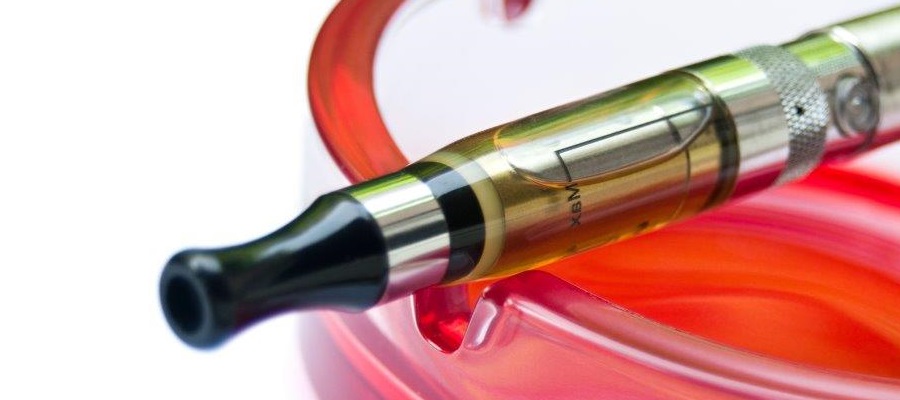Before you begin reading, answer the following questions:
• What do you know about e-cigarettes?
• Are they popular among teenagers in your country? Why or why not?
• What do you think are some problems with nicotine addiction?
• What are some of the differences between e-cigarettes and regular cigarettes?
E-CIGARETTES: TURNING BACK TIME WITH TEEN USE
Many teenagers may not realize it, but the Center for Disease Control (CDC) has fought against “Big Tobacco” companies before in the 1970s. When tobacco products first came out, celebrities, sexualized TV commercials, and cartoon advertisements flooded1 the world, and their target2 audience was children and teenagers. Think about what is “trending” right now. Music, style, and TV shows are driven to success through the teenage consumer. Teenage buying power can make or break a product. Take a look in the mirror. Did you know that you and your friends hold so much sway3 over the economy? You do.
Now, e-cigarettes want your business again. In the 70s, teens were drawn to tobacco because advertisements made it look cool. By the time the CDC came in and created rules about advertising and age restrictions and increased the cost of tobacco products through added tax; a whole generation of teenagers was addicted to nicotine. The CDC claims that e-cigarettes are turning back the clock and repeating history again. Right now, there are few to no regulations preventing tobacco companies from targeting teens in their marketing, so guess what? In the last year, the number of teens who are vaping (smoking e-cigs) has tripled4. The CDC estimates that more than 450,000 eleven-to-thirteen-year-olds have picked up the habit this year, while over 2 million fourteen-to-eighteen-year-olds are now confirmed5 users.
WHY ARE TEENS PICKING UP THE HABIT?
• Candy-flavored vapors: E-cig companies are making flavors6 that appeal to children and teenagers.
• Starter kits7 are sold online: Many vape shops now have age restrictions, but teens have found other retailers8 online that will sell to them.
• Advertisements make vaping look cool: Unfortunately, many teenagers are insecure and the desire to look cool is the driving force behind many of their purchases.
• Easier to hide: Vaping liquids may have a smell, but it is definitely more subtle9 than cigarette smoke. Many parents may not be familiar with the different scents related to vaping.
• Belief that there are no risks: Most teens believe that nicotine and caffeine are about the same. They are unaware10 of any real consequences of becoming an addict to nicotine.
TO VAPE OR NOT TO VAPE, THAT IS THE QUESTION: DEBATE!
Choose a side and make your argument! Do not be afraid to make your own points. These position statements were written to get you started. Points you truly believe in will be more powerful than anything listed below.
FOR: FREEDOM TO VAPE
• Safer than regular cigarettes.
• You can customize11 your vape experience with different flavors and accessories.
• Non-Smoking areas do not apply to you.
AGAINST: PROTECT OUR YOUTH
• Nicotine addiction affects teenage brain development. Teens may feel like adults and they may even have adult problems, but their brains are still growing and changing. Nicotine impacts12 that growth.
• Nicotine is just as addictive as cocaine and heroin. Here are some withdrawal symptoms you are sure to experience while trying to quit nicotine: irritability, attention difficulties, sleep disturbances13, an increased appetite, and intense cravings14 for tobacco products.
• Vaping might smell sweet, but no doubt about it, it can still damage your lungs. How? The vapor contains some nasty sounding chemicals.
Are you vaping? Congratulations, then. You will be the first generation that clearly shows future generations what vaping really does to your lungs.
Lindsey Halas
VOCABULARY: 1 zaplavili; 2 [ta:git] cielová – cílová; 3 rozhodujúci vplyv – rozhodující vliv; 4 strojnásobilo sa – ztrojnásobilo se; 5 notorickí, nenapraviteľní používatelia – notoričtí, zatvrzelí užívatelé; 6 arómy – vůně; 7 súpravy – soupravy; 8 maloobchodníkov – maloobchodníků; 9 jemnejší – jemný, sotva znatelný; 10 neuvedomujú si – neuvědomují si; 11 prispôsobiť – přizpůsobit; 12 ovplyvňuje, pôsobí na – ovlivňuje, působí na; 13 poruchy spánku; 14 túžba, chuť – touha, chuť

